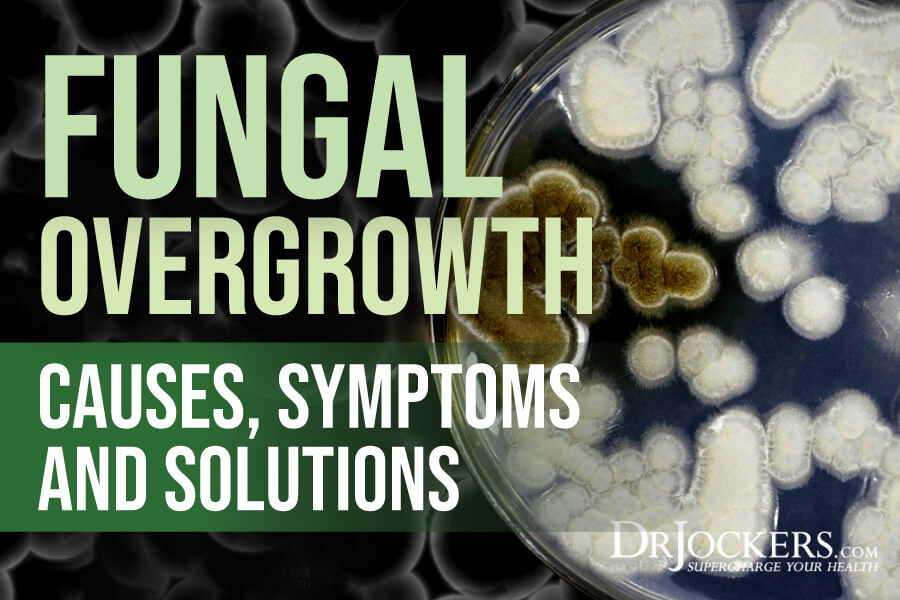 Fungal Overgrowth: Causes, Symptoms & Solutions
Fungal Overgrowth: Causes, Symptoms & Solutions
Are you battling with bloating, gas, digestion problems, fatigue, headaches, skin problems, or other nagging symptoms? Fungal overgrowth may be the culprit.
Fungal overgrowth is the overgrowth of fungi, most commonly, the yeast Candida in your body that leads to gut flora imbalance and countless symptoms. The good news is that you can prevent and recover from fungal overgrowth through an anti-inflammatory diet, healthy lifestyle, and fungus-fighting supplements.
In this article, I will explain what fungal overgrowth is. You will understand its symptoms and major causes. I will share the best testing methods and the top natural solutions I recommend for fungal overgrowth.
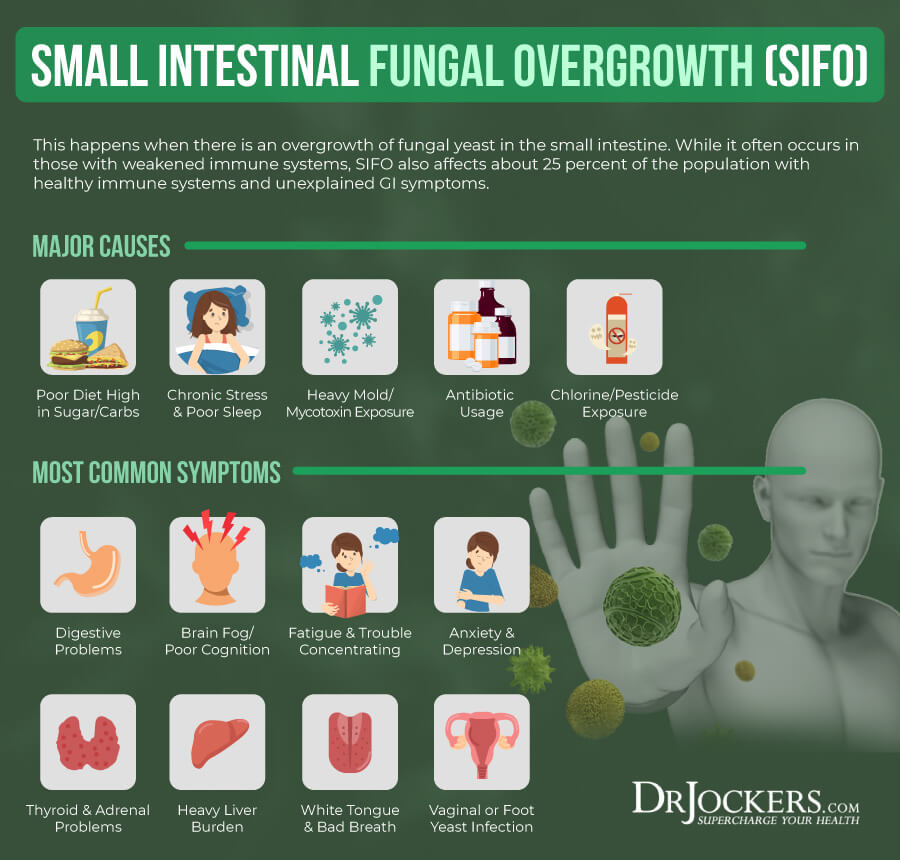
What is Fungal Overgrowth
Fungal overgrowth is an overgrowth of fungi, most commonly, the overgrowth of the yeast Candida in your body. Fungal overgrowth can lead to a variety of infections across the body, including Oropharyngeal candidiasis or thrush affecting your mouth and throat, Candida esophagitis, an infection in the esophagus, genital or vulvovaginal candidiasis or vaginal yeast infection affecting vaginal health, cutaneous candidiasis affecting the skin, and candidemia occurring in the bloodstream.
Since fungal overgrowth can result in various symptoms all across the body, recent studies decided to investigate the role of fungal overgrowth in the small intestine and a possible cause of unexplainable gastrointestinal (GI) symptoms (1, 2).
You’ve probably heard about small intestinal bacterial overgrowth (SIBO). But it may that fungal overgrowth can also happen in your small intestines? Small intestinal fungal overgrowth (SIFO) is a condition characterized by high levels of fungi in your small intestine that results in GI symptoms.
SIFO is a common condition. While it often occurs in those with weakened immune systems, SIFO also affects about 25 percent of the population with healthy immune systems and unexplained GI symptoms. In over 97 percent of these cases, the fungi responsible for the overgrowth is Candida (3, 4).

Candida and Fungal Overgrowth
Candida is found in a healthy body in small amounts in the mouth, immune system, and skin. Candida is normally found in your mouth and intestines. At low levels, Candida is normal and helps digestion. However, when overgrowth happens, you can run into health issues.
When Candida is overproduced and overgrown, it can break down your intestinal wall, get into your bloodstream, release toxic byproducts. The most commonly known problems contributed to Candida overgrowth are vaginal yeast infections and oral thrush, however, Candida overgrowth in your gut can lead to a variety of gut health issues, as well as other symptoms, including fatigue, brain fog, headaches, joint problems, and pain.
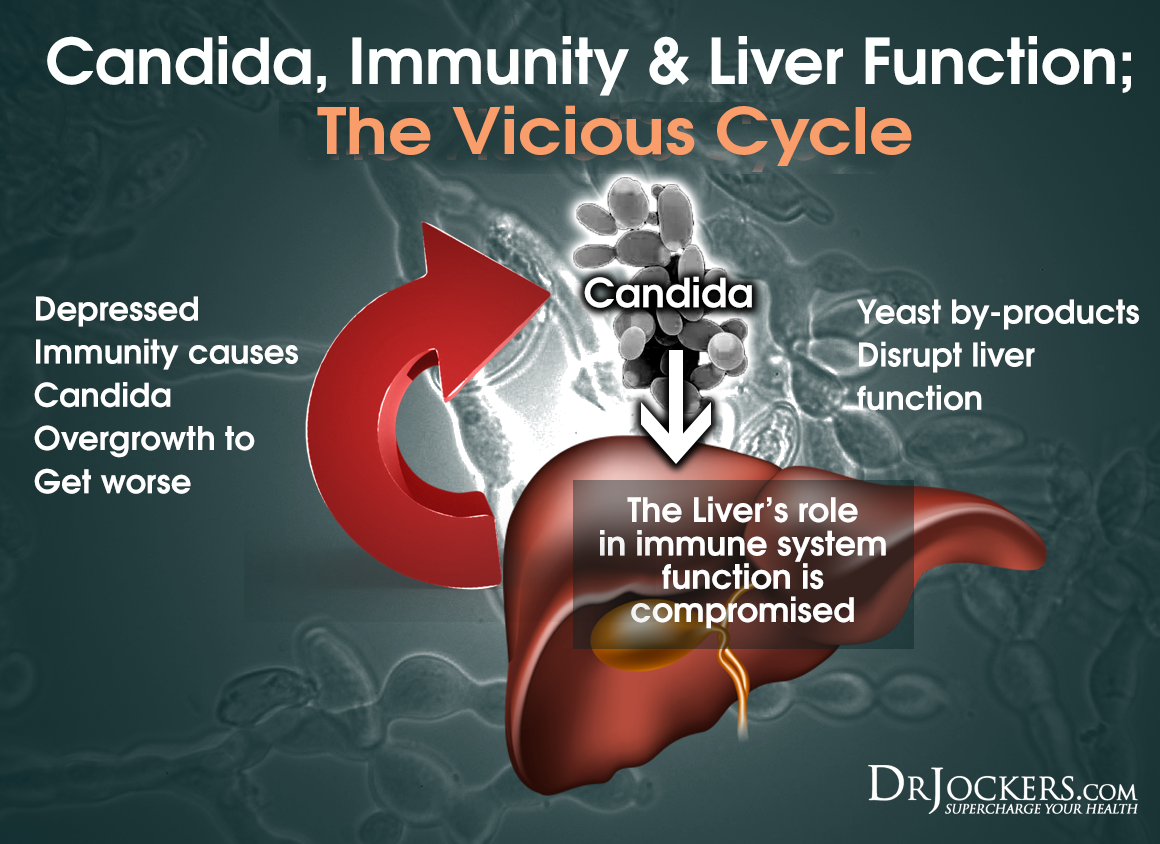
Major Symptoms of Fungal Overgrowth
Major symptoms of SIFO and fungal overgrowth may include:
- Bloating
- Gas
- Belching
- Abdominal pain
- Diarrhea
- Nausea
- Weight issues
- Malnutrition
- Fatigue
- Headaches and migraines
- Poor memory, difficulty concentrating, or brain fog
- Mood swings or irritability
- Depression or anxiety
- Vaginal infections
- Urinary tract infections
- Skin or nail fungal infections
- Skin problems, including rashes, hives, eczema, and acne
- Seasonal allergies
SIFO and other forms of fungal overgrowth can become a contributing factor to leaky gut syndrome, irritable bowel syndrome (IBS), Crohn’s disease, ulcerative colitis, and autoimmune conditions (5, 6).

Major Causes of Fungal Overgrowth
Fungal overgrowth can develop due to an unhealthy diet and lifestyle and toxic exposure. Let’s look at the major causes of fungal overgrowth.
Inflammatory Diet
Eating an inflammatory diet high in sugar, starches, dairy, processed foods, and junk food, and low in greens, veggies, healthy fats, and clean protein is the number one offender when it comes to fungal overgrowth. Processed foods, junk foods, and comfort foods in the Standard American Diet (SAD) are high in fungus-feeding and Candida-promoting inflammatory sugar, starches, and dairy, as well as toxic unnatural ingredients.
Sugar, including all-natural sweeteners such as coconut sugar, maple syrup, or honey, feed Candida and other fungal overgrowth. High-carb starchy foods, such as pasta and potato dishes also add to the problem. Alcohol is also problematic. Some alcohol, such as beer and wine are not only liquid sugar but are also fermented.
This yeast and sugar combination feeds fungal overgrowth. Dairy creates an inflammatory environment in your gut and the milk sugar lactose adds to the problem. The combination of these Candida-promoting inflammatory foods can wreak havoc your system and create fungal overgrowth.

Chronic Stress & Poor Sleep
Chronic stress and poor sleep can be detrimental to your immune system and gut health. When your body is under stress, it responds with the release of cortisol. While this is beneficial in cases of acute stress, such as an accident, fire, or physical attack, but in constant high amounts due to chronic stress, cortisol is highly inflammatory and can lead to adrenal fatigue, a compromised immune system, digestive issues, and more problems.
Temporarily shutting down your digestive functions is another stress response that under chronic stress can make you more vulnerable to fungal overgrowth, gut flora imbalance, and digestive problems. Chronic stress can lead to poor sleep, while poor sleep is one of the main contributing factors of chronic stress, which results in an unhealthy and inflammatory cycle that can lead to fungal overgrowth.

Toxic Overload
Toxins are everywhere around us. They are in our polluted air, tap water, non-organic food, conventional cleaning, body, and beauty products, dental mercury fillings, plastic products, and so on. For example, research has shown the connection between mercury overload and fungal overgrowth.
Candida can bind with mercury in your intestines, disrupt your gut flora balance, and lead to a number of symptoms. Mold in your house can also directly correlate with fungal overgrowth in your body. Exposure to air fungi, or mold can result in systemic inflammation and devastate your immune system leading to the chronic overproduction of fungal antibodies, leaky gut syndrome, and GI symptoms (7, 8).
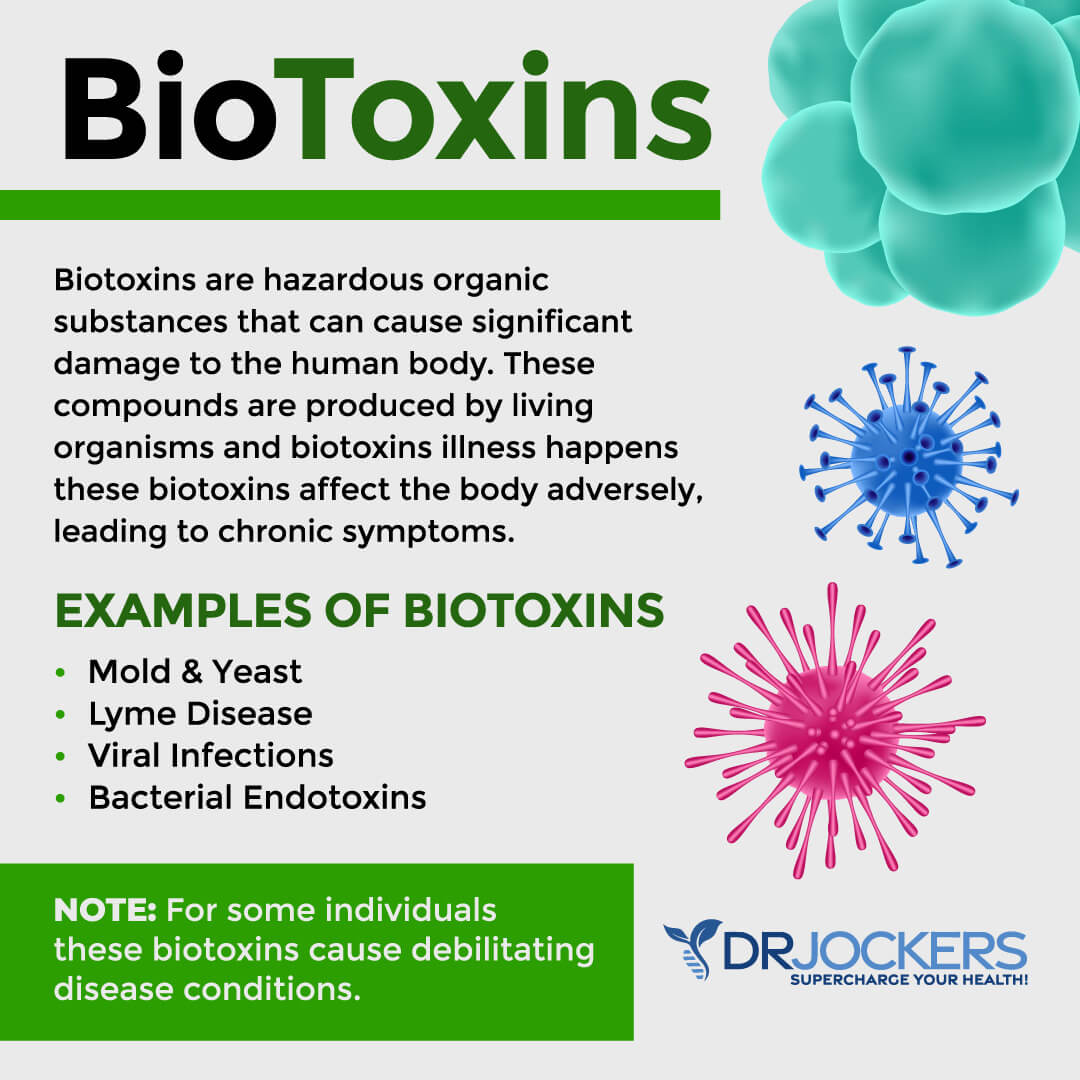
Use of Antibiotics
While prescription antibiotics can be beneficial in some serious cases of bacterial infections, they are overprescribed. They are often used when unnecessary for minor bacterial infections that your body could handle with the help of natural remedies or even in cases of viral infections when antibiotics are useless.
The problem with antibiotics is that they not only kill the bad bacteria but also kill the good bacteria in your gut leading to gut flora imbalance. This microbiome imbalance can easily become a feeding ground of Candida and fungal overgrowth. If you are already dealing with fungal overgrowth while taking antibiotics, it makes it even more difficult for your body to rebound and create balance after antibiotic use.
Eating conventional animal products further feeds into these issues. These animals are not only kept under inhumane conditions and fed non-organic foods but are also treated with antibiotics which end up in your body ruining your gut flora and feeding fungal overgrowth when eaten. Even if you are not taking antibiotics yourself, conventional animal products treated with antibiotics can create and issue and lead to fungal overgrowth (9, 10).
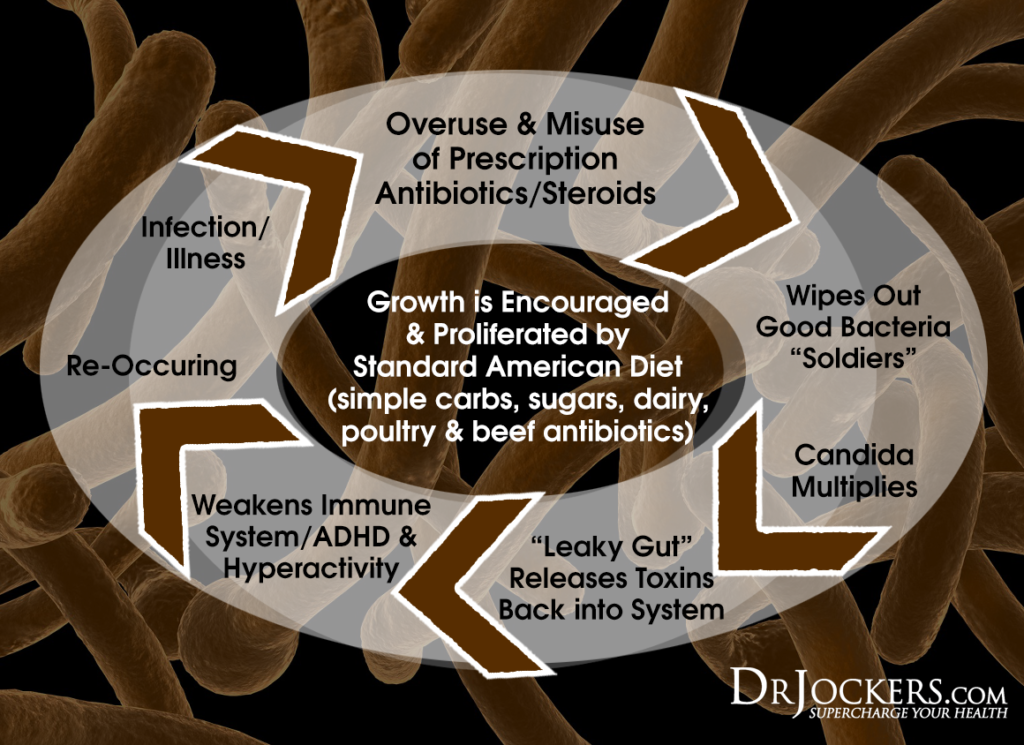
Drinking Unfiltered Water
Hydration is critical for your health, but to avoid the risk of fungal overgrowth, you have to pay attention to the kind of water you are drinking. Municipal tap water is loaded with toxic environmental chemicals, including chlorine, fluoride, heavy metals, arsenic, and DBP’s.
These toxins can destroy your immune system and chlorine can seriously damage your healthy gut bacteria making you vulnerable to fungal overgrowth (11, 12, 13).

Exposure to Pesticides/Herbicides
Pesticides, herbicides, and fungicides that non-organic produce and food are treated with can increase inflammation, suppress your immune system, destroy your gut flora balance, and wreak havoc in your health.
By creating a microbiome imbalance, they make you more vulnerable to fungal overgrowth. By compromising your immune response and increasing inflammation, they make it more difficult for your body to prevent or fight off fungal overgrowth (14).
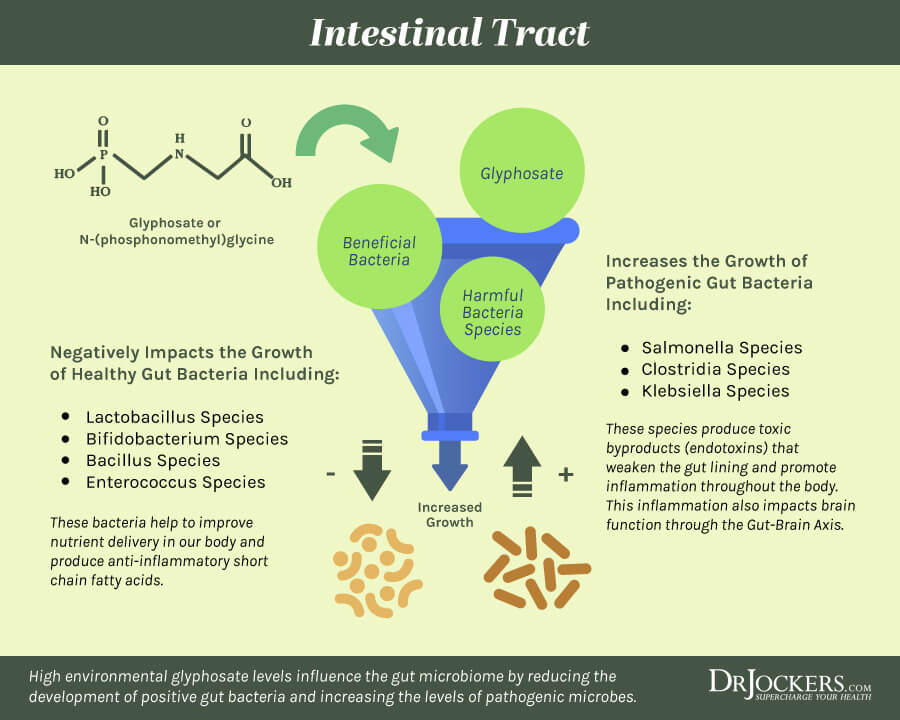
Testing For Fungal Overgrowth
Testing for fungal overgrowth requires some comprehensive functional health tests. Read on to learn why I recommend a simple at home spit test along with the Organic Acid Test and the GI Map Stool Test for fungal overgrowth and gut health problems.
The Spit Test:
If you want a quick, cheap test on your own, I would begin by doing a simple home spit test as follows.
1. Glass of Water: Drink a glass of water in the morning when you wake-up. After drinking some water, fill a clear glass with room temperature bottled water.
2. Have a Good Spit: Work up a bit of saliva, and spit it into the glass of water. Check the water every 15 minutes or so for up to one hour.
3. Observe the Movement of the Strings: Your saliva should stay at the top in a cohesive blob. If you see strings (fibers) traveling down into the water from the saliva floating on the top, cloudy specks (particles suspended in the water) or cloudy saliva that sinks to the bottom of the glass you have a candida problem.
If you have allergies or have recently eaten some dairy products, you will likely test ‘positive’ on the spittle test. Dehydration can also lead to a positive reading, which means that you are far more likely to test positive after you wake in the morning.

Organic Acid Test
To determine whether or not you have a fungal overgrowth, I recommend a Comprehensive Organic Acid Test. This is a truly comprehensive test that provides metabolic insight into your overall health. There are over 70 markers that this organic acid test is looking for including vitamins and antioxidants, oxidative stress, energy production, detoxification, neurotransmitter levels, oxalates, and intestinal yeast and bacteria.
This means that you can not only look for and diagnose fungal overgrowth but gain a deeper understanding of your overall health and understand the root causes of your symptoms. The test is a simple, non-invasive, at-home urine test that gives a great deal of information. To learn more about this test, I recommend reading this article.
GI MAP Stool Test
Another test I recommend is the GI Map Stool Test. It is important that you know that the Organic Acid Test is better as stool tests are not as good at picking fungal overgrowth up. Nonetheless, the GI Map Stool Test is a comprehensive test that looks at an array of biomarkers.
It allows you and your doctor to gain important information about your gut health, and discover underlying gut health issues that may have contributed to fungal overgrowth or developed due to fungal overgrowth. For proper diagnosis and treatment, getting both of these testings done is a smart and proactive idea. To learn more about the GI Map Stool Test, I recommend reading this article.
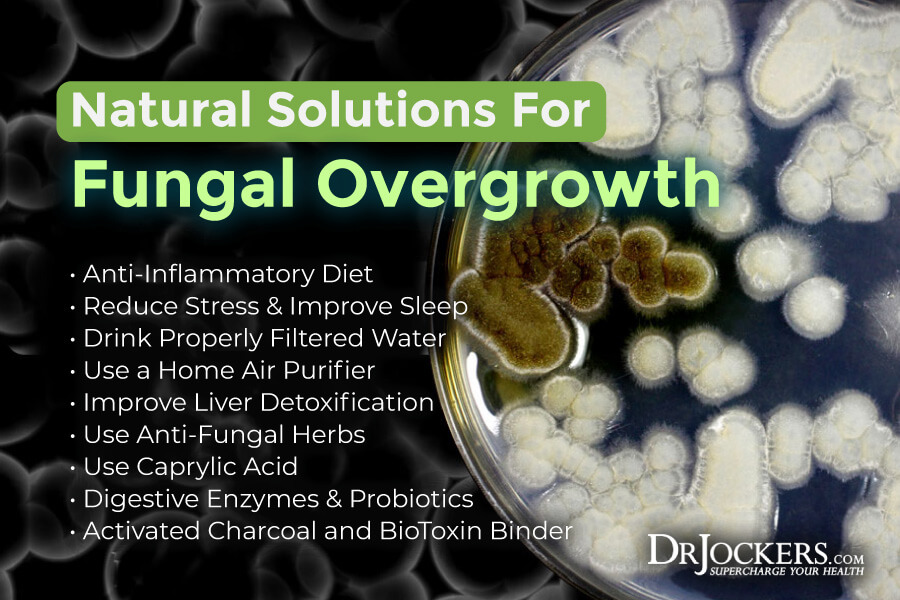 Natural Solutions for Fungal Overgrowth
Natural Solutions for Fungal Overgrowth
If you have been dealing with fungal overgrowth and its symptoms, you have nothing to worry about. You can tackle this issue with the help of some simple dietary and lifestyle changes and some powerful supplements.
Anti-Inflammatory Diet
To fight fungal overgrowth, Candida overgrowth, or SIFO, I recommend an anti-inflammatory diet. Avoid refined sugar, refined oils, processed foods, junk food, and non-organic food. Since Candida and other fungi feed on sugar, it is important that you eliminate sugary and starchy foods and dairy from your diet.
While fruit is healthy, I recommend that you stick to low-glycemic index fruits, such as blueberries, raspberries, and other berries eating only a limited amount. Following a low-carb ketogenic diet can help you stick to a low-sugar anti-inflammatory plan by focusing on greens, non-starchy vegetables, healthy carbs, and clean protein. To learn more about a low-sugar anti-inflammatory diet, I recommend this article.

Reduce Stress & Improve Sleep
Reducing stress and improving your sleep is critical for creating an anti-inflammatory environment, supporting your gut flora, and recovering from fungal overgrowth. To lower your stress levels, engage in relaxing and stress-reducing activities, including meditation, breathwork, yoga, journaling, dance, nature walks, coloring, play, and reading, avoid stressful situations and people who bring you down, and if needed, learn better coping skills from a coach or a therapist.
To improve your sleep, make sure to create a safe and peaceful environment in your bedroom with comfortable pillows and bedding. Turn off all electronics a few hours before going to bed and engage in relaxing activities.

Drink Properly Filtered Water
Making sure that you drink properly filtered, high-quality, clean water is critical for fighting and preventing fungal overgrowth. I recommend using a high-quality reverse osmosis system that purifies your water by removing all the toxins. I recommend systems such as the iSpring or the Berkey system.
The best water is the UltraLux Triple Action Hydrogen Water Machine which is what I use at home as it is powered by molecular hydrogen which reduces oxidative stress in the body and improves immune function. To avoid further toxicity from chemical residue from plastic bottles, make sure to use a stainless-steel bottle, glass bottle, or a mason jar when out and about.

Use a Home Air Purifier
Avoiding mold and other air toxins is critical for prevention and recovery from fungal overgrowth. This is why it’s so important that you protect yourself by using a home air purifier.
I recommend and personally use the EnviroKlenz Mobile UV Model. With the help of a HEPA filter, it captures harmful dust, allergens, microorganism, particulate, pet dander, and more. Using a patented Earth mineral technology that creates an “Adsorptive Neutralization” process that acts to break down and eliminate airborne mycotoxins, mold spores and other toxic chemicals.

Improve Liver Detoxification
Your liver is a very important organ for detoxification. The problem is that if you have fungal overgrowth or other gut flora imbalances, your liver may get overwhelmed and not able to do its job. When you are starting to tackle your fungal overgrowth, you will particularly need your liver’s help to detoxify unnecessary fungi from your body.
Supporting your liver and improving liver detoxification through a liver supporting foods, including radishes, artichokes, lemon, apple cider vinegar, cucumber, celery, cilantro, dandelion, turmeric, and ginger. To learn more about liver cleansing, I recommend this article, and to learn more about liver-supporting foods, read this one.
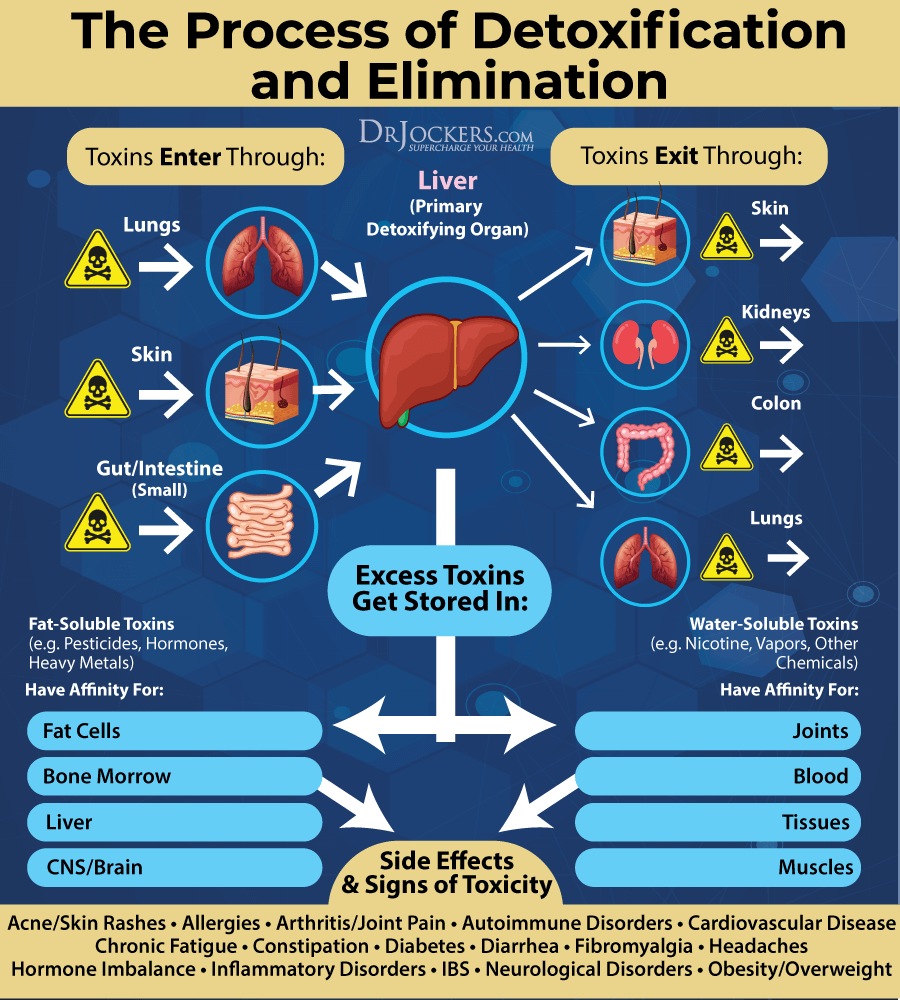
Use Anti-Fungal Herbs
To help your recovery from fungal overgrowth, regain your gut flora balance, and prevent future fungal issues, I recommend using anti-fungal herbs. Some of my favorite anti-fungal herbs include garlic, onions, basil, oregano, thyme, fennel, ginger, astragalus, pau d arco, and olive leaf extract.
You can use them in your dishes, as a spice, and most of them are delicious as teas or can be used as essential oils. You may also use them as a supplement. CandidaElim, for example, helps to fight Candida and fungal overgrowth with the help of oregano, ginger, turmeric, and olive leaf extract, while Candida Combat supports your body’s recovery from fungal overgrowth with oregano, pau d arco, and astragalus root (15).
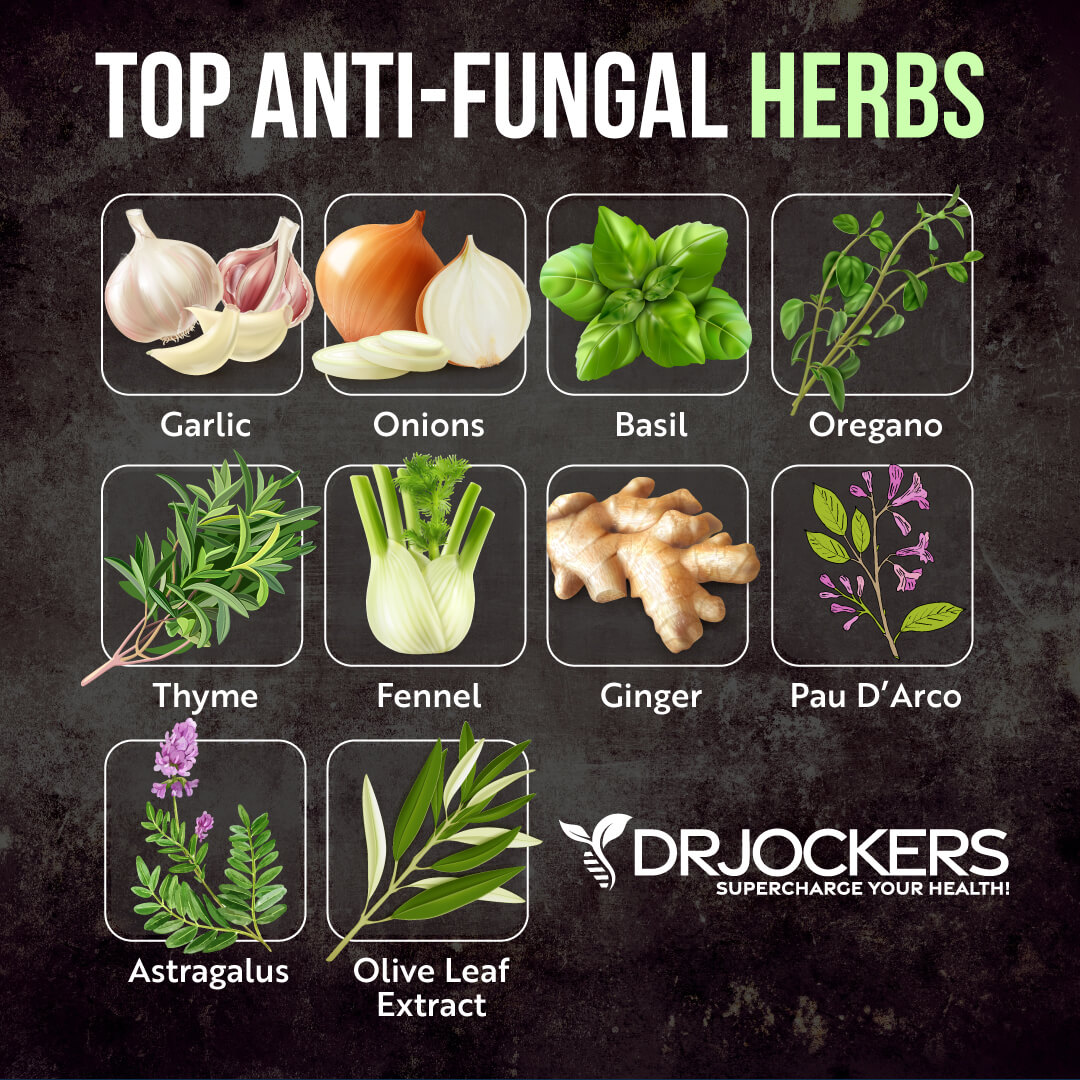
Consider Using Caprylic Acid
Caprylic acid is an effective supplement for Candida and fungal overgrowth with research-backed antifungal benefits. To experience the full benefits of caprylic acid, I recommend Keto Brain.
It is a pure and ketogenic C8 (caprylic acid triglyceride) formulation that fights fungal overgrowth while improving the gut, providing immune protection, supporting your brain, and boosting energy (16).
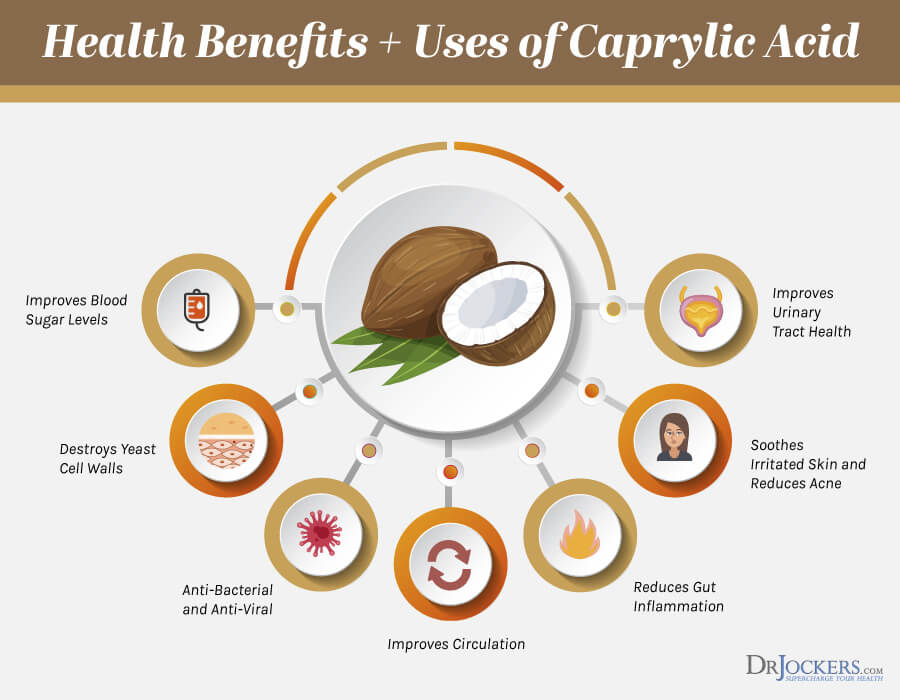
Consider Using Digestive Enzymes & Probiotics
To support your digestion and balance your gut flora, consider using digestive enzymes and probiotics. I recommend Super D-Zyme to support your digestion, enhance nutrient absorption, and help the breakdown of lactose and polysaccharides.
Take it daily with each meal. I recommend ProbioCharge for maximum probiotic support. Take it daily for optimal benefits.

Consider Using Activated Charcoal or a Biotoxin Binder
Consider using activated charcoal or a BioToxin Binder. Activated charcoal has millions of tiny pores that capture and bind materials in an absorbent manner, much like a sponge. It pulls fungus out of your gut.
I recommend taking 2 capsules of Activated Coconut Charcoal mid-morning and 2 in the mid-afternoon an hour away from other food, supplement or medication. BioToxin Binder which is a bioactive carbon based compound helps to tackle toxins across your entire body. It helps to pull fungus and mold out of your gut, bloodstream, organs, and brain. I recommend taking one capsule three times a day.

Consider a Full Anti-Candida Protocol
For optimal benefits and smooth recovery from Candida or fungal overgrowth, consider a Full Anti-Candida Protocol. This protocol includes Candida Combat and CandidaElim for the elimination of Candida and fungal overgrowth, CandidaElim for detoxification, Super D-Zyme for digestive support, and Gut Healing Protein for microbiome support.
Along with an anti-inflammatory diet, liver detoxification support, and a healthy lifestyle, the Anti-Candida Protocol is a bullet-proof system that may help to tackle even the most serious cases of fungal overgrowth.
Final Thoughts on Fungal Overgrowth
Fungal overgrowth is a common problem that can lead to bloating, gas, digestive problems, headaches, fatigue, skin issues, and other health problems.
Fortunately, you can prevent and recover from fungal overgrowth through an anti-inflammatory diet, healthy lifestyle, and fungal-fighting supplementation. Follow my tips to regain your health and happiness free from fungal overgrowth.
Inflammation Crushing Ebundle
The Inflammation Crushing Ebundle is designed to help you improve your brain, liver, immune system and discover the healing strategies, foods and recipes to burn fat, reduce inflammation and Thrive in Life!
As a doctor of natural medicine, I have spent the past 20 years studying the best healing strategies and worked with hundreds of coaching clients, helping them overcome chronic health conditions and optimize their overall health.
In our Inflammation Crushing Ebundle, I have put together my very best strategies to reduce inflammation and optimize your healing potential. Take a look at what you will get inside these valuable guides below!



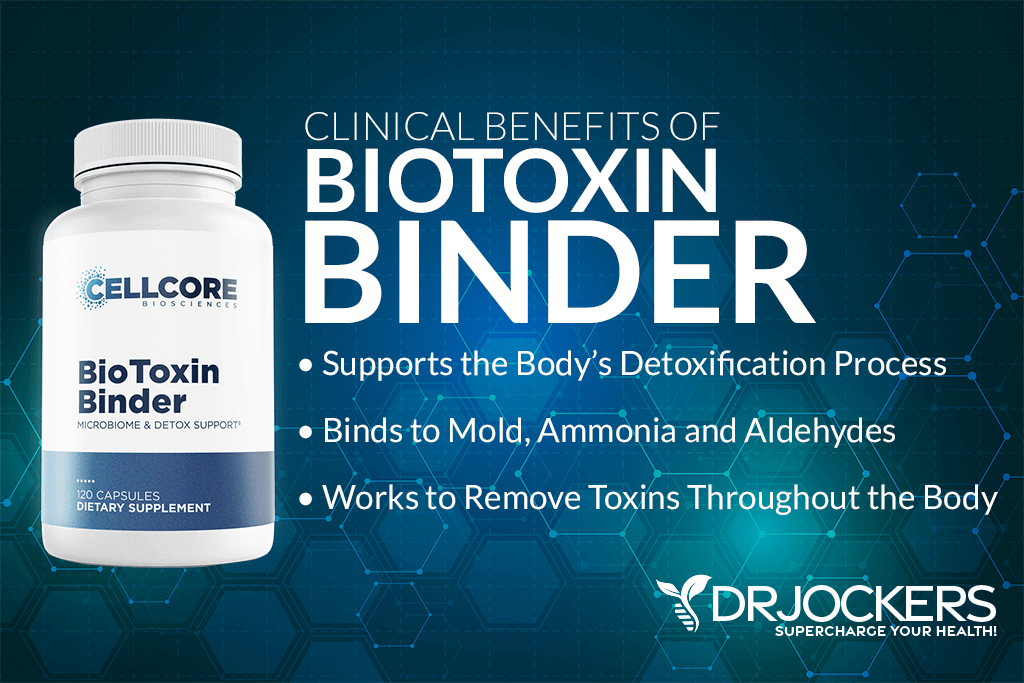




Can nutritional or brewers yeast add to candida overload? I thought it was good for you but recently switched my magnesium supplement to one that is bound to nutritional yeast. I take it at bedtime as magnesium is supposed to help you sleep. Every time I take it, I wake up feeling like I’ve been run over by a truck. It’s similar to a nyquil or benedryl effect – hard to wake up, heavy head, brain fog, fatigue for most of the next day. I’ve never experienced this with any magnesium supplement that isn’t bound to yeast.
Hey Andrea, if you have a history of yeast/fungal overgrowth than I don’t recommend using nutritional yeast. It sounds like you are not having a good experience with it.
It’s ridicolous to say that whole grains cause inflammation as many study show the opposite to be the case. For example whole grains promote the production of short chain fatty acids by your gut bacteria which have a great antiinflammatory effect.
Hey Florian, unfortunately grains contain a lot of anti-nutrients (lectins and phytic acids) that are problematic for the gut and grains cause a rise in glucose and insulin the turns on inflammatory gene pathways. There are many foods that do not contain these anti-nutrients and are great prebiotics that feed gut bacteria to produce short chain fatty acids. Things like avocados, artichokes, asparagus, broccoli, cauliflower, brussel sprouts and many others. Stick with these and avoid the grains!
Grains today are not the grains of 100 years ago. Most all grains today are gmo’s, are full of pesticides, and also molds and their mycotoxins are a huge problem. In fact Europe has banned all grains grown in the US because of these problems. It is well known that celiacs usually have no problem eating grains when visiting Europe, and then their problems return upon re-entering the US. Dr. Stephanie Seneff discovered that gluten is not the problem in grains, but in fact pesticides bond to the gluten molecules and then make holes in the gut. That is also how pesticides kill insects; it makes holes in their guts and kills them. I find that a rather an alarming “coincidence”. Yes, grains used to be a healthy food, but not the way it is processed today. Many of the famous Blue Zones have cultures where grains are never eaten and they are extremely healthy. Another problem with grains, is that they turn to glucose in the bloodstream contributing to fungal overgrowth and all sorts of chronic disease.
Hi,
I hope this finds you well. Do you also recommend a specific water filtration system? Ideally, it filters out all of the above culprits.
Warmest regards,
Stephanie
Yes, a good reverse osmosis system is a good idea, or a Big Berkey. My favorite that I personally use is the Hydrogen water system that you can read about here: https://drjockers.com/hydrogen-water/
Have you ever solved someone’s case where they had a fungal problem their entire life of 45 years, and they tried everything (and I do mean nearly everything from turpentine on down the line, hundreds of things) to fix it for 10 years where it always came back? If yes, what was required? Thanks
Yes, but it is important to consult with a trained functional health coach for this. Here is a helpful article for you: https://drjockers.com/functional-nutrition-tips-to-find-a-great-health-coach/
Have you tried visiting a naturopath for a prescription for Nystatin? Nystatin stays in the gut and kills fungus quickly. Also, ask for systemic antifungal at the same time like Diflucan or any others. They are extremely safe other than causing detox reactions. I had it really bad too for most my life, and even had it growing on my skin, so the doctor also gave me an antifungal cream. Try eliminating most ALL carbs for a year or two and it will also kill them off naturally. Diet is key. Must make drastic changes. Read books by Dr. C. Orian Truss and also Dr. William G Crook; they are famous pioneers who discovered that fungal overgrowth is responsible for most all our chronic diseases. It becomes systemic and causes arthritis, fibromyalgia, MS, chronic fatigue, depression, anxiety, etc. Best of health and good luck.
What could be a candida protocol if people is intolerant to phenol, salicylates, oxaltes and thiol/ sulfur due to genetic mutations…..
Thanks
That is a tough one! Best to work with a functional health practitioner to customize that plan. https://drjockers.com/functional-nutrition-tips-to-find-a-great-health-coach/
Many people with that same problem report that simply focusing on meats and fats and leaving out most all plant sources really helped them. Joe Rogan just did an interview with a gal who eats only meat for many years because of that same problem. I noticed that for myself many years ago. Plants just do not agree with me, so I do have some, but not much and feel great.